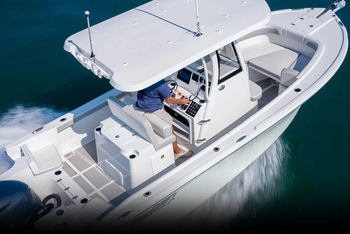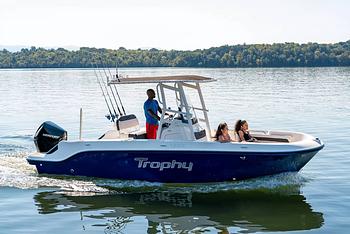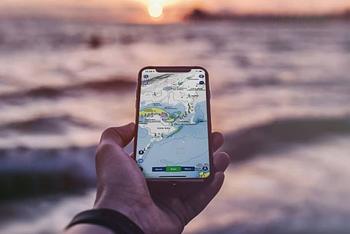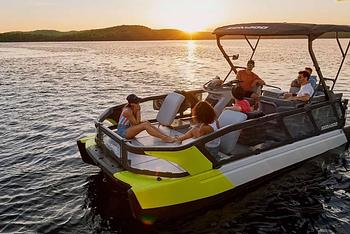Sailing dates back thousands of years and is still one of the best-loved pastimes in the United States and across the world. Learning to sail brings many benefits, from gaining a whole new skillset, to getting out into the fresh air, improving your fitness, meeting like-minded people, and spending quality time with your family. If you’re considering learning to sail, start by checking out our guide on Getting into Sailing.
We all need to start somewhere and getting into sailing on the wrong type of boat for your experience level can leave you feeling frustrated. While the temptation to buy something filled with gadgets and plenty of space is there, remember that your love for sailing will come from feeling in control and at one with the ocean as you learn its every move. Simplicity is the key to that.
In this post we are focusing on the frequently asked question: "What are the best sailboats for beginners?" In short, all you really need is a hull, mast, rudder, and sail and you can be soaring along the coast or lake soaking up the sense of freedom that sailing brings. But of course buying a boat is never quite that simple, and with so much choice out there we have narrowed down the options.
Don’t forget, this doesn’t have to be your forever boat. As your skills improve and your horizons widen, you can upgrade to larger or more complex sailboats, but for this moment, consider the here and now and what boat will suit it.

A comfortable daysailer, the Marlow Hunter 18. Photo credit: Marlow Hunter
What Makes a Sailboat Good for Beginners?
As a general rule, the smaller the boat, the easier it will be to handle, although there are exceptions. The simplicity of the boat's sails and sail controls will also affect its beginner-friendliness. To start, we recommend choosing a boat that's easy to rig, lightweight, transportable, and simple to sail. From sailing dinghies to daysailers, weekender sailboats and trailerable boats, beginner boats are nifty and a lot of fun.
While safety and ease of handling are the main considerations for most beginners, there are several other factors that make a good beginner’s sailboat;
- An easily manageable size: A larger sailboat might feel more stable and allow you to venture farther or accommodate more people on board, but a smaller sailboat will certainly be easier to handle. Larger sailing yachts will need more complex rigs too, and as a beginner you want to be keeping everything as easy as you can while you get to grips with the act of sailing. Start off small and work your way up to bigger boats as your experience and confidence grows.
- A stable and comfortable ride over beauty: While you gain experience sailing, having a stable and safe sailboat under you will give you confidence. There will be bumps and scrapes and wrong maneuvers, and having a boat that can withstand these without expensive repairs will make them less stressful when they inevitably happen. Both dinghies and small keelboats make good starter boats; dinghies tend to be light and responsive, teaching lessons by feel as well as by eye; keelboats are more stable and can easily carry more and larger adults.
- A tiller for steering instead of a wheel: Having a tiller to steer with takes sailing back to the basics and allows you to get a better feel for the movement of the boat as you learn. The tiller is connected directly to the rudder, providing more feel for the flow of water past the boat. Unlike a steering wheel, you have to learn to move the tiller in the opposite direction that you want to turn, but you will quickly develop a more intuitive sense of the boat’s changes in speed and direction.
- An easy rig and simple sails: Again, simpler is always better for your first boat, and that goes for the rig and sails too. Sailing has a steep learning curve, so if you'll be sailing alone, we recommend that you choose a boat with a single mastand only one sail that you can set up by yourself quickly. You’ll have more on-the-water time and less setup and takedown time. If you’re storing your boat via trailer, be sure the mast is light enough to hoist into place by yourself. When it comes to the rigging, a halyard to hoist the mainsail and a sheet to control it are all you need. It’s possible to learn on a sloop-rigged with two sails, but it will be easier in that case if there are two of you learning together.
- Widely available model: By choosing a popular sailboat with lots on the used market you’ll find it easier to buy spares and parts as well as online resources to help you maintain it.
- Don’t spend too much: This is your first sailboat, and if you catch the sailing bug, it’ll most likely not be your last. As your skills improve you’ll want to get bigger models that will allow you to cruise farther and do more. The used boat market is huge, with online boat selling marketplaces such as Rightboat offering thousands of listings, so there are plenty of inexpensive, good quality small sailboats to be found.

The Laser, a sporty dinghy that can also be raced
20 of the Best Beginner Sailboat Brands
There are quite literally hundreds of brands and models of new and used small sailboats on the market and whittling it down to 20 of the best isn’t easy. But there are some sailboats which have stood the test of time and which remain today some of the best loved beginner sailboats out there. In no particular order, these are some of our favorites:
- Wayfarer sailboats
- Catalina sailboats
- Dart sailboats
- Sprint sailboats
- West Wight Potter sailboats
- Hobie sailboats
- Marlow-Hunter sailboats
- Skipper Craft sailboats
- Sabre sailboats
- Cape Dory sailboats
- Westsail
- Dufour sailboats
- Hurley sailboats
- MacGregor sailboats
- Beneteau sailboats
- Seaclipper sailboats
- Island Packet sailboats
- Jeanneau sailboats
- Capri
- Optimist
The Best Beginner Sailboat Types
There are so many types of sailboats on the market that it’s hard to narrow down the best ones for a beginner. From dinghies to multihulls you have plenty of choice:
- Sailing dinghies: These small, lightweight sailboats are a good choice for a very first sailboat, their simplicity and ease of handling allowing beginners to get to grips with the skills they would need to advance to a more complex rig system. Accommodating one or two people with a single sail and single mast, these inexpensive boats offer the simplest back-to-basics sailing experience there is, and they can be easily taken apart for cheap storage or trailering. Their only downside is their easy ability to capsize but because of their weight they can be righted easily. The Optimist is the best known choice for children under 15 years of age, these bath-tub sized boats offering a lot of fun as well as safety and a great learning experience. For adults wanting to learn to sail, there are many similar boats on the market. The Pico, Sabot, Harteley 10 and RS Quba are commonly seen zipping across the waves near sailing clubs, while the Laser Bahia, Laser Vago, Topper Xenon and Topper Topaz are popular models for those looking for slightly bigger dinghies.

The International Optimist Dinghy, a youth learn-to-sail and racing boat
- Small catamarans Multi-hulls are renowned for their stability and therefore make excellent first sailboats. But size is a big factor and ‘small’ is the keyword here. Catamarans are fast and easy to maneuver, and the trampoline between the hulls makes for a fun sailing experience. The risk of capsizing with a catamaran is markedly lower than a monohull, but they’re also harder to upright if, in the unlikely event, they do go over. If there are cons to a catamaran it’s that they tend to cost more than monohulls and a marina berth will certainly cost more.
- Small sloops: While slightly more advanced than a dinghy, a small sloop is a great sailboat to learn with and to develop your skills on. It will still have one mast but can have up to three sails (usually one or two) which is good for perfecting your sailing techniques.
- Trailerable Sailboats: Ok, so this is necessarily a type of sailboat, but it’s certainly a major consideration when buying your first one. Being able to trailer your sailboat allows you to sail in different locations and conditions, therefore improving your skills. Of course the flip side is that you have to spend time setting it up each time you want go out on the water as opposed to have a ready rigged boat in a marina.
The Best Small Sailboats for Beginners
There are many models to choose from, with brand-new designs being launched each year alongside ever-popular models which have stood the test of time. Here we take a look at some best-loved beginner sailboats on the market.
The Best Beginner Sailboat with a Cabin: Catalina 16.5 and 22
Catalina is one of the best-known manufacturers of weekend sailboats and their range is extensive. The mid-range 16.5 and slightly larger Catalina 22 models both offer a simple set-up, fiberglass hull and deck, and a retractable keel for easy trailering. The 22 model offers a cabin which can sleep four, making it a cozy family boat for overnight trips. A large cockpit and swim ladder are added luxuries, but the real benefits for beginners is the simple fractional rig with a mainsail and a roller-furling jib.

A sloop-rigged daysailer, the Catalina 16.5. Photo credit: Catalina Yachts
The Best Beginner Cruising Sailboat: Hunter 15 and 22
These comfortable daysailer or weekend sailboats by popular manufacturer Hunter offer plenty of space with their large, open-transom cockpit, easy handling and fiberglass hulls. Whether you opt for the Hunter 15, 18 or the larger 22 with its twin bunks, they’re a great choice for teaching a child to sail, or for adult beginners to gain their confidence. But don’t be fooled into thinking it can’t get a real move on! A molded, anti-skid fiberglass and foam flotation hull means they have added safety and can easily be manned by one person.
The Best Beginner Sailboat for Coastal Sailing: Cape Dory 28
This is the largest beginner sailboat on our list, but if you’re planning long coastal cruises then you wouldn’t want to be doing so with anything much smaller. While it will take a bit more experience, the Cape Dory 28 is a solidly built and reliable vessel perfect for beginners. It has a full keel for stability in big seas, and it handles exceptionally well. Down below you’ve got the benefit of a small cabin, galley and head, and space to eat both inside and out. Because of their popularity and the sheer number of them built you can pick up one for a good price on the used market.
The Best Beach Sailboats for Beginners: Hobie Wave and Hobie 16
Hobie catamarans have been sailing off beaches all over the world for many years. The trailerable, sporty Hobie 16 sailboat is celebrating 50 years in manufacture—some 100,000 have been built during this time, a true testament to their popularity. As a multihull with a fiberglass and foam hull and a kick-up rudder board, the Hobie 16 can be sailed right up to the beach, and its trampoline allows for plenty of space to move around while learning new skills. Its newer little sister, the Hobie Wave, is even more rugged and simpler for beginners. Built with a rotomolded hull that's extremely durable, the Wave is just 13 feet long, has one sail, and is easily managed by one or two people.

The most popular beach catamaran ever, the Hobie 16. Photo credit: Hobie
The Best Liveaboard Sailboats for Beginners: West Wight Potter P 19
While liveaboard boats tend to be slightly larger than most beginner boats, if you want something relatively simple but with enough space for short-term living/cruising, the West Wight Potter P19 is a great option. For a weekend sailboat it packs a lot into a compact space, with berths for four people as well as a galley equipped with cooler, sink and cooker. Its retractable keel and flat-bottomed hull means you can explore virtually anywhere without even getting your feet wet, and it’s a great choice for trailering. For beginners, the West Wight Potter P19 is ideal thanks to its simple rig, good handling characteristics, easy handling and safety features—foam fore and aft means even if it is flooded the boat is unsinkable.
Common Challenges for Sailboat Beginners
It’s inevitable that things won’t always be smooth sailing when you’re starting out, but that’s also part of the fun of learning a new skill. Don’t forget to ask for help and advice along the way from those who have been sailing for a while, be kind to yourself when you don’t get things right, and enjoy the process and sense of achievement as you improve. Some of main hurdles to overcome include:
- Understanding the laws and regulations: It can seem like a complicated minefield in the beginning understanding what the boating laws are and which licenses and paperwork you need in order to sail in different parts of the U.S. and beyond. As well as taking sailing courses, there are lots of official online resources these days to give you a state-by-state overview. A good starting point are our guides on what qualifications you need as a first time boater, and which licenses you need to drive or sail a boat.
- Learning boating jargon: It can often sound like learning a whole new language and it’s easy to feel confused or frustrated by all the terminology there is to learn in boating. But it’s fun too, and soon you’ll be part of the club and using words that land-lubbers don’t understand. Taking a sailing course can help to speed up this learning process.
- Getting comfortable being on a sailboat: This might sound strange, but getting your sea legs is a big part of learning to sail and one that can take some people longer than others. While seasickness can rear its head at times, for most it's learning to get around on a moving vessel with ease and safety that takes a while to master.
- Tying knots: This can either be one of the most fun new things to learn or one of the most frustrating, but either way knots are a vital part of sailing for safety reasons. Start off easily with a few simple, common knots and just keep practicing. You’ll get the hang of it and be able to do them in your sleep in no time.
- Knowing the minimum amount of information to be safe and competent. In 2017 the US Coast Guard developed the American National Standards for Sailing Training (EDU-3). They then acknowledged sailing education bodies that teach to this standard. To date, NauticEd is the only education body meeting the standard. The course that meets the standard for small keelboats (up to 25 feet) is the NauticEd Skipper Small Keelboat Course. For an even more basic getting started course, NauticEd developed a 3-hour online course that covers the basics called Introduction to Sailing.
Related articles:
What are the Different Types of Sailboats?
This article was most recently updated in June 2023 by John Burnham
Related Articles and Guides
14th Apr 2024
Best Small Center Console Boats Under 25 Feet
7th Apr 2024
Best Cheap Fishing Boat Brands, Affordable to Cheapest of All
30th Mar 2024
Best Boat Navigation Apps for Smartphones
29th Mar 2024






